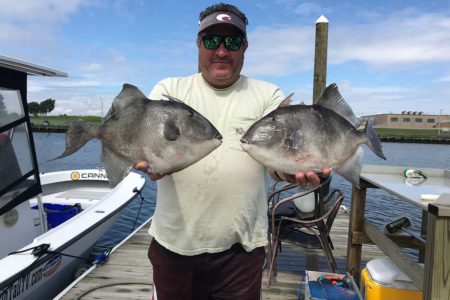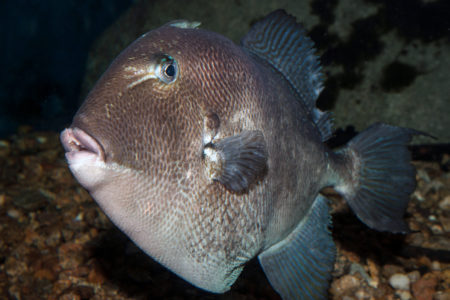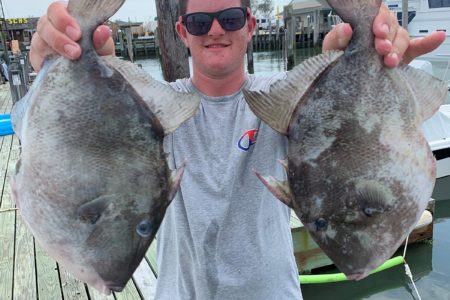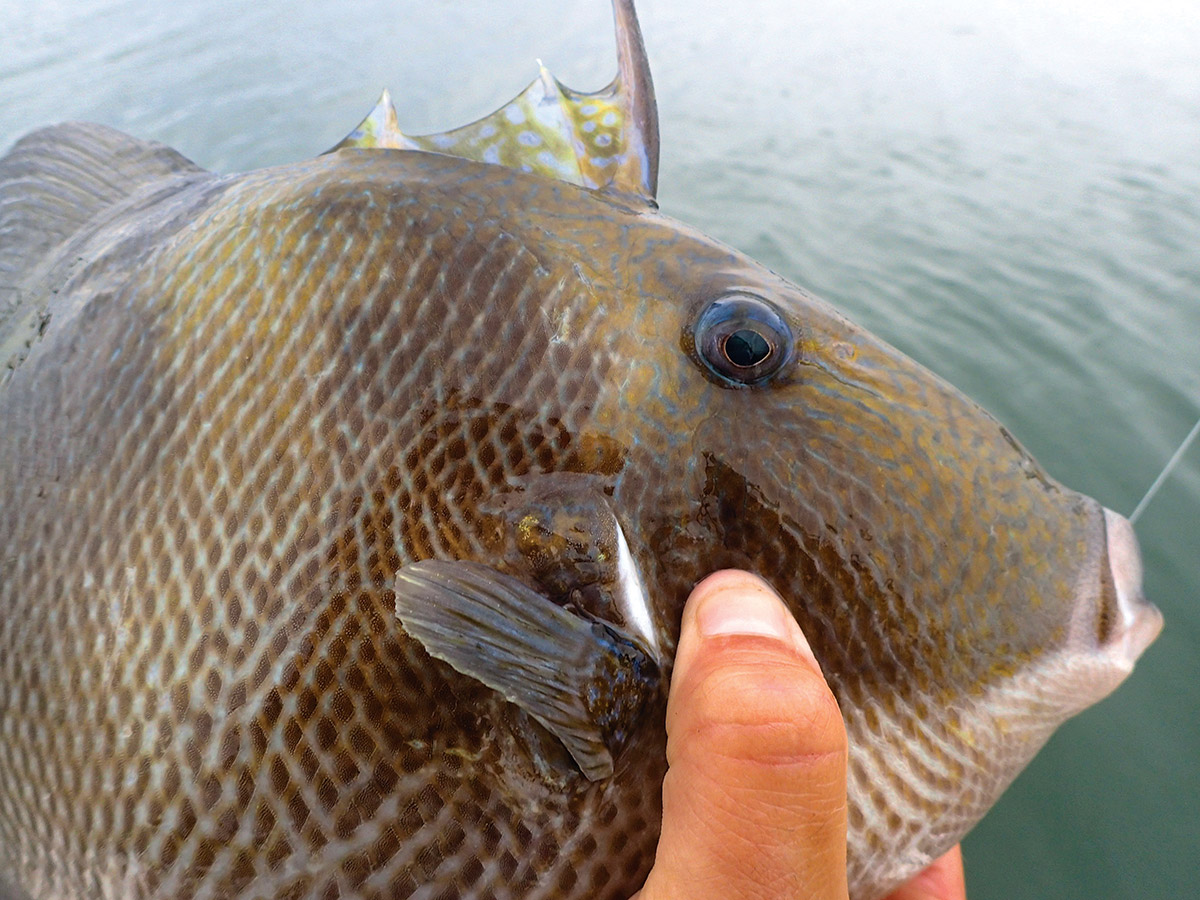
Itching for the start of fall blackfish? Tune up with the inshore summer “tog” with an exotic flair.
Triggerfish, in respectable abundance, have been showing up in New Jersey waters for many years now. There has even been an increased amount of triggers caught in the northern part of the Garden State as opposed to just being exclusive to the southern portion of the state. This is another example of migration change and expansion of range.
Once strictly a bycatch for many tog and sea bass fishermen, triggers can be specifically targeted during August, September and sometimes early October. The state record gray triggerfish—to be specific on which sub species of triggers arrives here—is listed at 6 pounds, 11 ounces taken by James Massimino in 2016 at the Sea Girt Reef. For the most part, triggerfish caught in these parts are commonly in the 2- to 4-pound range.
Jetty Jockeying
The triggerfish’s appearance is an absolute delight to jetty fishermen. They add another great-eating species to the list of fish that can be caught by the rock hounds pounding away on these manmade fish magnets. The most consistent jetties are those with deep drop-offs on both sides and the front of the system. The deep water allows for wake action to have a negligible effect on the water clarity near the bottom. Water that is entirely choked with sand, sediment or broken seaweed is not favorable for catching triggerfish. Like all inshore species, the cleanest water near the top of the tide is the best; albeit, triggers will bite on the low end of the tide on deep water jetties. Barnacles, muscles, crustaceans and crabs are the main attraction around the boulders.
Aside from the forage base, current breaks and hiding spots abound by the nature of the irregular pattern in which jetty rocks rest. Moreover, the very end of the most productive jetties will contain boulders resting in deep water and beyond what can be seen from above. Having talked to local spearfishermen, I’ve learned that triggerfish swim along the lengths of the jetties with the tide, coming and going as the cycle floods and ebbs. But when they find an area of liking they stage for a period of time to school and feed before moving to their next location. For anglers hoofing it on the jetty, time spent fishing for blackfish and/or triggerfish helps them gather information about where the triggerfish set up and at what tide.
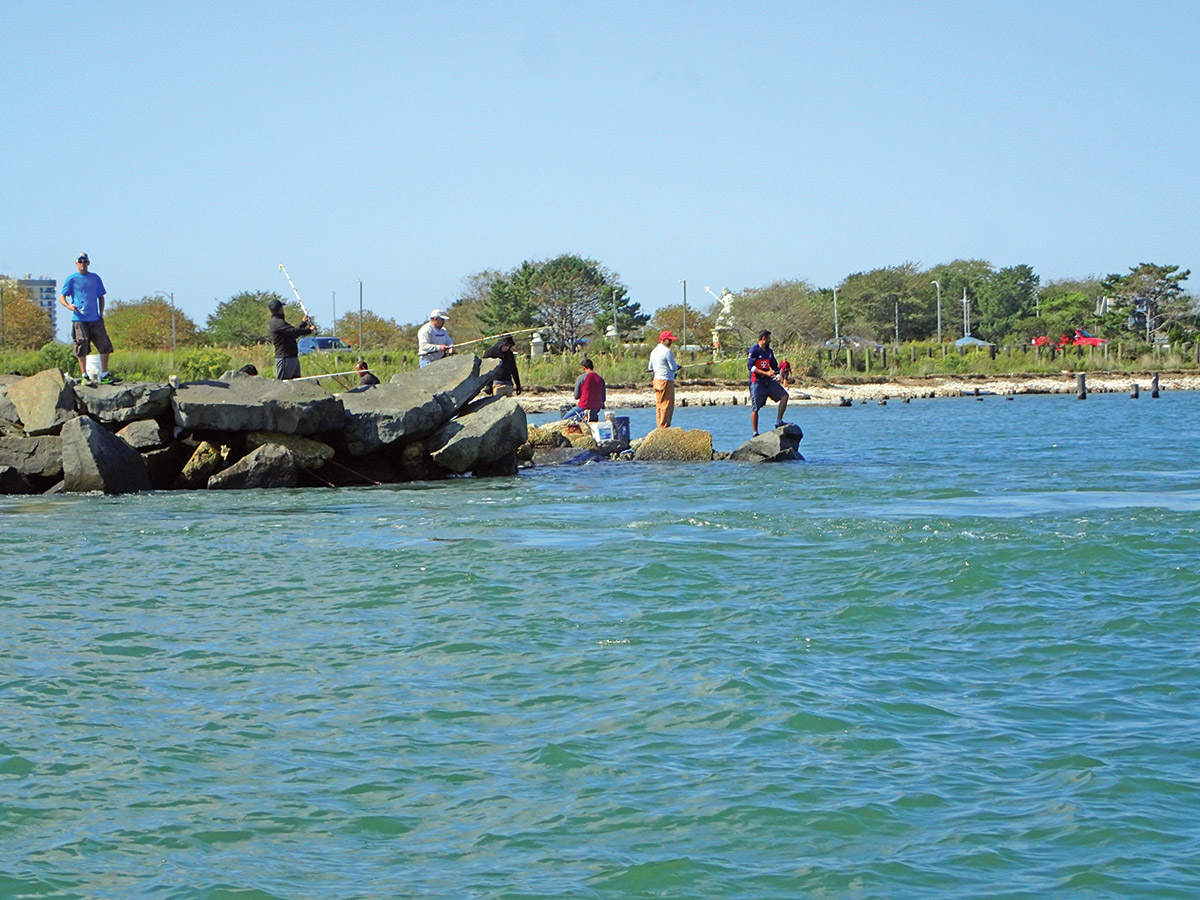
Land-based anglers aren’t the only ones who specialize in jetty fishing, as boaters can also target these fish along the jetty walls. In Virginia, the Carolinas and Florida, boaters casting to the rocks share the human-created, boulder ecosystem with the guys perched on those same boulders more so than in other regions. In New Jersey, I’ve seen more boat captains target the jetties in Cape May County and Ocean County than that of Atlantic County, which sits in the middle of the two. Trolling motors in particular can allow anglers to situate themselves just “offshore” and creep where they need to along jetty systems as needed. Then casting commences. What’s more, a captain can “spot lock” right on top of sunken boulders and drop straight down.
Keep in mind that anchoring near a jetty can be rather tricky and dangerous if not done properly and shouldn’t be done on a rough day or on one with boat traffic creating hefty, sloshing wakes. Captains that get close to the jetty can reduce the scope of their line when they pitch rigs and jigs toward the jetty. Some captains have been known to use their Danforth anchor on the inlet floor while tossing a chunk of lumber leashed to cheap twine into the jetty rocks. With two holding points they are able to largely stabilize the vessel in the way they prefer. When it’s time to depart, they can shimmy the lumber free from the boulders, but if it gets stuck, they’ll leave the lumber and rope, only to drive over to the jetty by vehicle later to retrieve it.
It’s important for boating anglers to also be wary of jetty anglers. It’s considered improper to invade a jetty fisherman’s space and get right up in his casting line of fire. This leads to tension and arguments. Boaters have the ability to seek out rocks that don’t have any jetty fishermen toiling and they can begin their business there. In some cases, there are jetties that anglers cannot reach by foot because they’ve eroded away or become too dangerous at high water. These are prime spots for boats. Moreover, the fish haven’t been pressured by the land guys and no ethical friction takes place. I can think of a half dozen of these places off the top of my head.
Surf or Turf
Whether by land or sea, the best choice of triggerfish bait is often crab or clam. Green crab cut in half and hooked through the leg socket is favorable. Shucked clam certainly attracts activity and should have a hunk of the clam “tongue” on the on the hook. Any goopy, clam innards that anglers can keep on the hook helps. On the bottom, that yuck falls away and serves as a tiny chum slick to the bait. A 3/0 Berkley Fusion 19 or 3/0 Gamakatsu octopus hook is a safe play because of a trigger’s small mouth.
Berkley Gulp baits also catch quite well. Triggers hammer white, white glow and chartreuse Gulp in the form of small 3-inch swimming mullets or shrimp patterns. After an initial trigger is taken, there is an increased hope that more will join in the action. Unfortunately, rogue fish move along the structure as well so there are no guarantees of multiples.
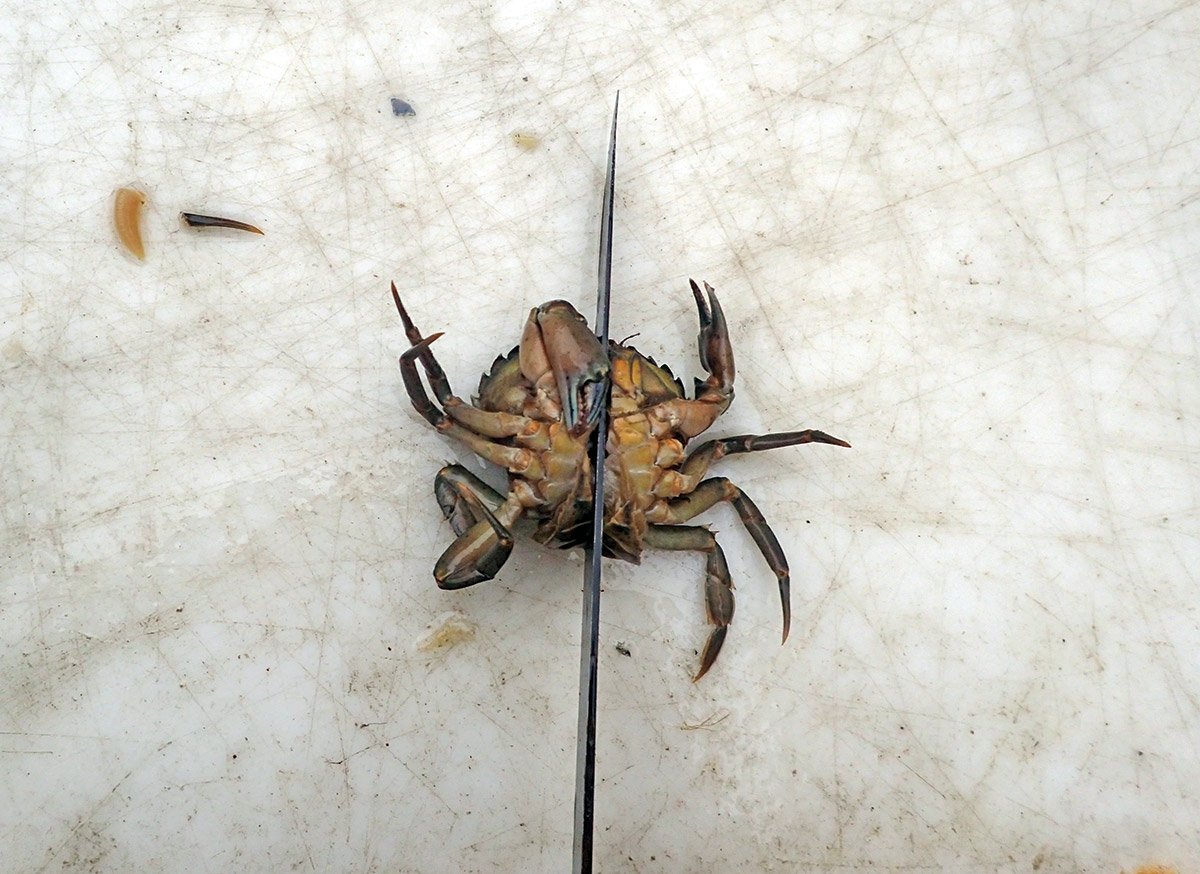
Fishing for gray triggerfish on the sod banks can be productive. Anglers have to battle through smaller blackfish, but the feeding tog also help build life in the area that draws triggers to the scene. The closer the sod spot is located to the inlet, the better the chance of scoring. The triggerfish bite doesn’t vary much from that of a blackfish with small munching bites that cause the rod tip to flicker, but triggers tend to zig and zag just a little bit more than tautog after the hook up. Anglers that swing and miss on the hook set often get a second chance because they won’t swim off if they simply have the bait pulled away.
Tackle is not complex. Spinning reels lined with 30- to 50-pound braid help withstand the rocks and growth attached to any and all structure. Granted, I have used my fluke gear with 15- to 20-pound braid when I changed plans on the water. I prefer Berkley X9 braid because it casts extremely well while simultaneously having less diameter. Standard tog rigs containing a dropper loop to the aforementioned hooks work well. As for leader, 30- to 40-pound fluorocarbon is suggested largely because of its abrasion resistance. ProSpec by Berkley is my favorite.
For those who like to cast jigs, consider the Magictail Gamechanger, Backwater Baits Football Jigs and Joe Baggs Togzilla Jigs. Once casted, they should be held still for a minute, then twitched off the bottom to a new resting spot. Repeat, repeat, and then recast. Again, the thin diameter of Berkley X9 or similar braid helps keep jig weights on the lighter side, ideally around a half-ounce to 3 at the most depending on depth and current. Rods are best no lighter than medium class since backbone is needed to pull these fish from the boulders. I have an affinity for the Fenwick Elite Tech Series of spinning or casting rods for this kind of fishing. They are light, long and have the muscle to handle any gorilla tog or trophy triggers.
Rockin’ & Wreckin’
Certain wrecks and rock piles gather schools of triggerfish more than others. Whether it’s their profile, water depth, physical make-up or combination of all three, fishermen that learn which pieces offer prime habitat put up better numbers. From my observations, it seems the inshore wrecks closest to the beach gather more trigger life. Many times fluke anglers can actually see the triggerfish chasing their bait to the surface. A quick change to a small hook and small bait can lead to a triggerfish/fluke cooler. Even with their mouths completely agape, they still don’t have that much bite diameter. And if crabs and clams aren’t available, anglers can break out their Berkley Gulp supply; squid pieces cut in 3- to 4-inch ribbons are also readily eaten by triggerfish.
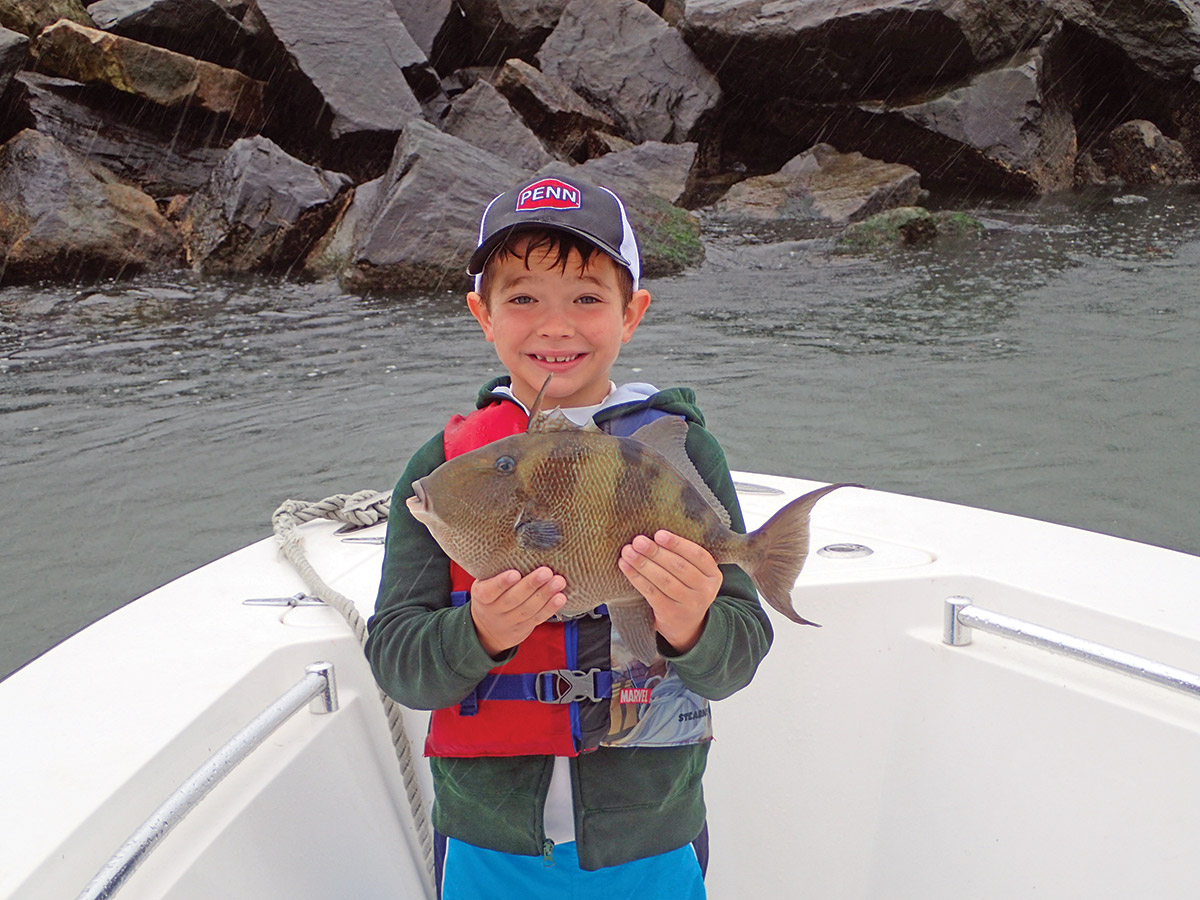
As noted, triggers staging on the hard structure are curious and willing to either chase or even suspend slightly above structure, therefore anglers specifically targeting triggers do well by staggering baits at different levels. Once a triggerfish fiesta begins, there’s almost a certainty that more are swimming in the confines of the structure. The bite can accelerate and the numbers can stack up until there is a change in the current, tide or even wind direction. As quickly as the triggers appeared, they will vanish to another portion of the wreck, and it can be quite daunting to find them again; they may also slack off their feeding.
The world record gray triggerfish sits at an astounding 13 pounds, 9 ounces and was caught in South Carolina. That mark doesn’t seem to be in danger here in New Jersey waters—not just yet anyway. But with warming waters and more and more southern species expanding their range and quantity, anything is possible.
